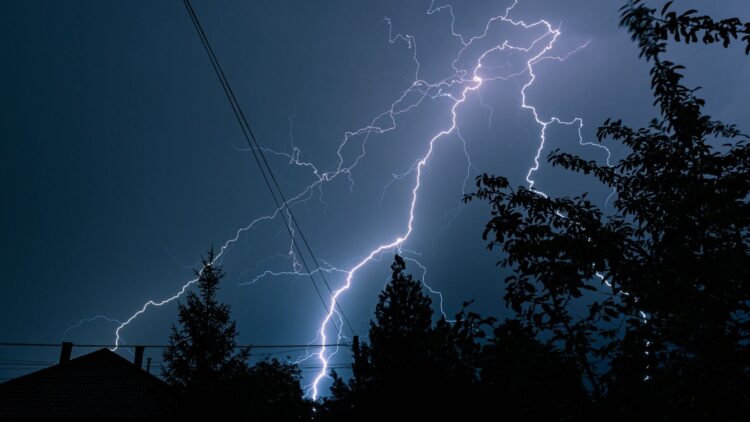In the heart of one of the rainiest ecosystems on the planet, a recent research has perplexed the scientific community. It is about a tree in Panama that defies traditional concepts about the interaction between vegetation and atmospheric phenomena, in which it takes electricity to be able to continue its plant life. The world of biology and ecology is being totally revolutionized as a result of this great discovery.
The study unveiled an unusual behavior in a tree species, which not only survives one of nature’s most aggressive phenomena, but seems to benefit from it. The discovery could alter what is known about the ecological dynamics of tropical forests and plant life.
This is the tree in Panama that is not afraid of lightning
In the jungle environment of the Barro Colorado Natural Monument, in Panama, an arboreal species attracted attention because of its peculiar relationship with thunderstorms. It is the Dipteryx oleifera, better known as the tonka tree, a large specimen that reaches up to 40 meters in height and whose wide canopy seems to play a key role in its exposure to lightning.
Unlike other species that suffer severe damage after a lightning strike, this tree in Panama demonstrates an unusual resilience. The phenomenon was recorded by an international research team, which analyzed more than 90 direct impacts in the area.
According to the data obtained, this tree not only survives lightning strikes, but may have developed an adaptive strategy to benefit directly from them.
How does the nature of this tonka tree work, according to scientists?
The effects of each electric shock on Dipteryx oleifera go beyond its own physiology. After each shock, the scientists observed the systematic elimination of parasitic lianas that cover the trunk and branches. These organisms often compete with the tree for nutrients and light. Their disappearance frees up resources and promotes the growth of the affected specimen.
In addition, the shock waves generated by the lightning strike propagate through the subway connections between roots, affecting nearby trees.
In many cases, these neighboring specimens die days or weeks later, either from direct electrical damage or from the collapse of the immediate ecosystem. On average, nine to ten neighboring trees have been observed to die per impact.
The result is a clearing in the forest, with Dipteryx oleifera in the center, free from competition for basic resources such as sunlight or soil nutrients. This uncluttered environment offers distinct advantages for tree reproduction and expansion.
How the reproductive effects of lightning work in trees
According to models developed by researchers, trees that have been struck by lightning show a reproduction rate up to 14 times higher than those that have not been struck by lightning.
This data suggests that the phenomenon is not merely circumstantial. The interaction between the tree in Panama and lightning could represent a case of advanced evolutionary adaptation.
The tree functions as a sort of natural lightning rod. Its height and physical structure make it more susceptible to lightning strikes, but also more able to survive them.
The key seems to lie in its ability to channel energy from the crown to the roots without causing significant structural damage. This behavior contrasts with what has been observed in other species, whose internal structures collapse under the heat and pressure generated by electricity.
What does the behavior of this tree in Panama contribute to science?
The results of the study indicate that these dynamics could have a considerable impact on the biodiversity and structure of tropical forests.
As thunderstorms increase in frequency and intensity (a phenomenon linked to climate change), species such as Dipteryx oleifera could be favored, to the detriment of others less adapted to this type of disturbance.
Among the expected consequences are:
- Reduction of smaller tree species or those less resistant to shocks.
- Changes in the distribution of fauna, especially those species that depend on low trees or closed environments.
- Increase in forest clearings, which can alter the dynamics of humidity, temperature and nutrients in the ecosystem.
According to a statement quoted by the ‘Science Daily’ portal, this phenomenon forces to rethink the role of lightning in forest ecology. What was previously understood as a random destructive event could be an evolutionary driver in certain regions of the planet.

